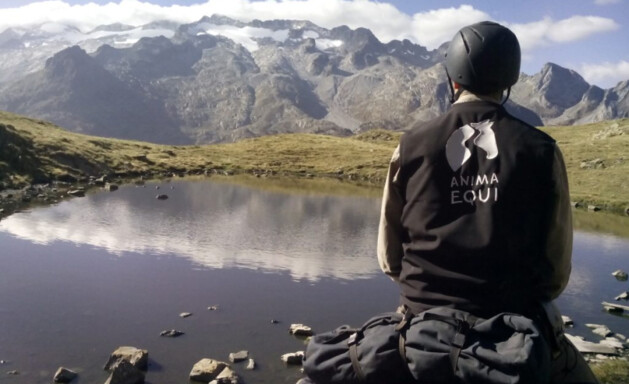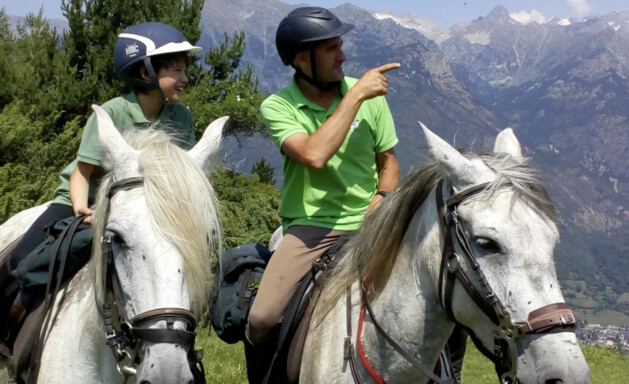How to prepare your horse for a long equestrian tourism ride
Preparing your horse properly before embarking on a long equestrian ride is essential to ensure its well-being and to enjoy a safe and rewarding experience.

Whether you’re planning to ride across the Aragonese Pyrenees or explore other guided horseback rides, meticulous ride preparation is key. In this article, we outline some fundamental aspects to prepare your horse before and during a long trek.
Health, training, and equipment
Before starting a long and demanding equestrian ride, ensure your horse is in optimal health. This includes a complete veterinary check-up, deworming, and updating necessary vaccinations.
Your horse should be properly trained to meet the demands of a long ride. This means following a gradual training program to build up the animal’s stamina and physical capacity. It’s crucial to include warm-up and cool-down sessions to prevent injuries and maintain muscle flexibility.
The training should also simulate the situations the rider-horse pair will face. For example: if the ride involves crossing rivers of varying flows, the pair should have practiced this beforehand, otherwise, stress will take a toll on both.
Ride planning and logistics
When planning the ride, divide it into stages that take into account the horse’s endurance, the terrain’s orography, and the location of suitable accommodations. It’s advisable to start with shorter stages (10-15 km) and gradually increase to 20-25 km, always observing the horse’s response, especially in mountainous terrain.
Choosing a saddle that properly fits the horse’s back is essential to prevent chafing and injuries. A saddle designed for equestrian tourism ensures proper weight distribution and safe attachment of the load.
Make sure the saddlebags are well balanced and not overloaded. The total weight the horse carries must be appropriate for its build and stamina. If the weight exceeds this limit, consider including a packhorse.

Care during the ride
It’s crucial to schedule regular breaks throughout the ride to allow the horse to recover. Breaks should be planned based on the terrain’s challenges and tourist features of the ride. As a general rule, it’s advisable to have a break after the first two hours of riding and a longer break around midday.
For longer stops, remove the saddle; for shorter breaks, it’s recommended to loosen the girth gradually. It’s also best not to schedule long rides immediately after eating. At the end of the day, it’s important to progressively loosen the girth.
Hydration and care
Ensuring the horse stays well hydrated is vital during an equestrian ride. The skin fold test can tell us about the horse’s hydration state. Plan ahead for water supply points along the ride: remember, a horse drinks between 25 and 40 liters per day depending on the season, and like humans, their hydration needs increase with exertion and heat.
Dehydration should be avoided at all costs, but if it occurs, it’s advisable to have electrolytes on hand to aid recovery.
At the end of each day, carefully inspect the horse for any swelling, injuries, or signs of fatigue. Pay close attention to its back, limbs, and provide a comfortable resting place, removing the saddle and allowing it to stretch and lie down.
Equestrian tourism in the Aragonese Pyrenees
The Aragonese Pyrenees offers spectacular landscapes and horseback rides that combine nature and culture. To fully enjoy equestrian tourism in this region, it’s crucial to respect safety rules, plan each stage properly, and have basic equestrian training, such as the courses offered by Anima Equi.
Riding through the Aragonese Pyrenees is an unforgettable experience that requires preparation and respect for both the environment and the animals. Meticulously preparing your horse before and during a long high-mountain ride—like those organized by Anima Equi—is essential to ensure its well-being and enjoy a fulfilling adventure. By following these tips and paying attention to every detail, you can experience a safe and memorable equestrian adventure.

